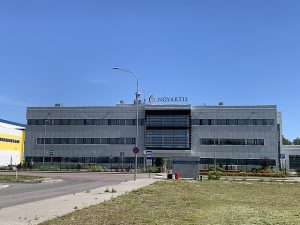Multinational pharmaceutical corporation Novartis has tapped clinical-stage biopharma company Bicycle to leverage the latter’s eponymous bicyclic peptide technology in the development of Bicycle radio-conjugates (BRCs) for application in a range of undisclosed oncology targets. Upon discovery of these BRCs, Novartis will step in to handle all down-the-road considerations such as further development, manufacturing, and commercialization, as well as fork over financing for preclinical and clinical expenses. Speaking of the almighty dollar, Novartis is paying an upfront $50 million fee to take this ride with Bicycle and committing to an additional $1.7 billion in potential milestone payments down the “bike” path.
Not in any way shy of the somewhat nascent tech, the Swiss pharma has bolstered its oncology program with radiopharmaceuticals. Two of its top-marketed drugs, Pluvicto and Lutathera, which treat prostate cancer and gastroenteropancreatic neuroendocrine tumors, respectively, take advantage of radiopharmaceuticals. Though industry-wide manufacturing woes managed to seep into Novartis’ machinations last year, both drugs were successful. Lutathera earned $128 million while Pluvicto raked in a whopping $179 million.
However, this isn’t a jumping off point for Bicycle as it already has a deal in place concerning multiple immuno-oncology targets with biotechnology company Genentech. Still, given the lucrative milestone payments that could come to fruition with the Novartis agreement, the company is eager to get BRC discovery underway. “We look forward to working closely with Novartis to pioneer the discovery and development of potential new cutting-edge radiopharmaceutical cancer treatments based on Bicycles,” said Kevin Lee, the Chief Executive Officer of Bicycle Therapeutics. “We believe the properties of Bicycles make them well-suited for the development of precision-guided radiopharmaceuticals and represents the next leg in the application of our proprietary discovery platform in oncology.”























